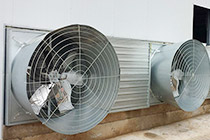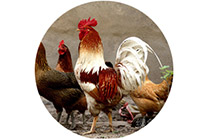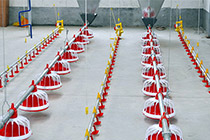-

Are friends who raise chickens troubled by tsutsugamushi?

Many chicken-raising friends are plagued by chicken tsutsugamushi, especially for chicks under four months of age. The most common and most common chicks are young, and sometimes adult chickens have different degrees of infection. Too serious will directly lead to the death of the chicken body, causing great economic losses to the farmers' friends.
-

Why do we need to repair the hoof for cattle?

Dairy hoof repair is a technique that uses a knife, scissors, saw, hoe or hoof repair machine to restore the shape and physiological function of the hoof. The types of dairy hoof disease include diseases such as rot rot disease, hoof deformation, laminitis, hoof dermatitis, inter-toe (toe), hoof erosion and hoof injury. Among the above-mentioned hoof diseases, rot disease and hoof deformation are the most common. Dairy cow disease is one of the four most common diseases in dairy cows. Due to the specific conditions of each farm, the incidence of hoof disease is different, which will not only affect the normal life of dairy cows, but also cause the performance of dairy cows to decline. Improper handling can even lead to the elimination of dairy cows, resulting in greater economic losses. There are several effects on the hoof repair of cows:
-

Why do calves like pacifiers?

Not long after the calf was born, the rumen was not fully developed and could not be digested with the rumen. There is an esophageal sulcus from the end of the esophagus to the entrance to the valve. When the calf is drinking milk, its sucking action reflexively closes both sides of the esophageal groove into a tubular shape, so that the milk flows directly from the esophagus into the gastric sulcus into the abdomen. This reflection is called esophageal groove reflection. The degree of closure of the esophageal sulcus is closely related to the way of sucking. When the calf sucks slowly with the artificial breastfeeder, the esophageal sulcus is tightly closed; however, when drinking milk from the barrel, due to lack of sucking stimulation, the esophageal groove reflex is reduced, and part of the milk will flow into the rumen. Because the calf's rumen development is imperfect, it can't discharge the leaked milk. The milk stays in the rumen for a long time and is prone to rancidity, causing calf diarrhea.
-

How to keep your shed's temperature?

Temperature is an important factor affecting the normal growth of chickens, maintaining the most appropriate temperature is particularly important for the development of chicken.
Chicken shed's initial temperatureis 34 ℃ ~ 32 ℃. healthy young chicks' temperature should be low while weak young chicks' temperature should be high. After a steady decline in the weekly 2 ℃ ~ 3 ℃, until about 21 ℃ when stable.the temperature of shed should be maintained constantly, avoiding large fluctuations in temperature.The thermometer should be evenly distributed in the chicken shed, and at any time adjust the height so that the bottom of the thermometer and chicken back in the same height.
-
 ▶
▶How to keep your shed's temperature?
Temperature is an important factor affecting the normal growth of chickens, maintaining the most appropriate temperature is particularly important for the development of chicken.
-
 ▶
▶How to cure chicken pox?
Skin chicken pox lesions occur in the hairless and less hair area, such as comb, hanging, face, nose and eye circumference, etc., to generate a verrucous acne. Skin chicken pox initially produce a small white nodule on the skin, nodules rapidly increase and become yellow, and the adjacent nodules to each other to form a dry, rough, brown scab, prominent in the skin surface.
-
 ▶
▶How to buy high-quality chicken feeding line?
Chicken feeding line is an automated poultry feeding equipment, mainly adapted to the feeding of broiler, chicken products, finished chicken. With a high degree of automation, accurate feeding control and other characteristics, chicken feeding line is composed of silos, feed pan, conveying pipe, auger, motors and level sensors and other components.














 Position:
Position:



